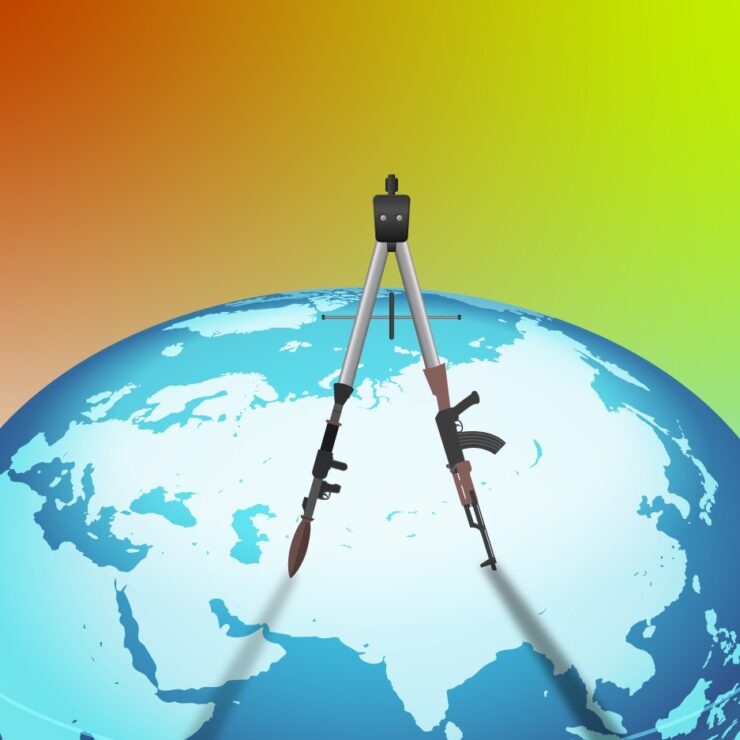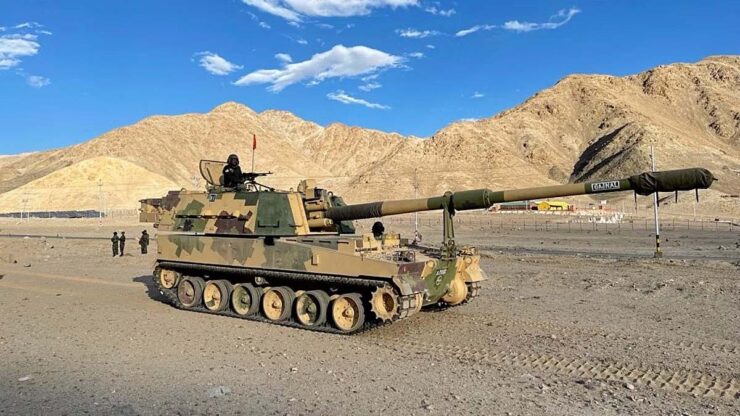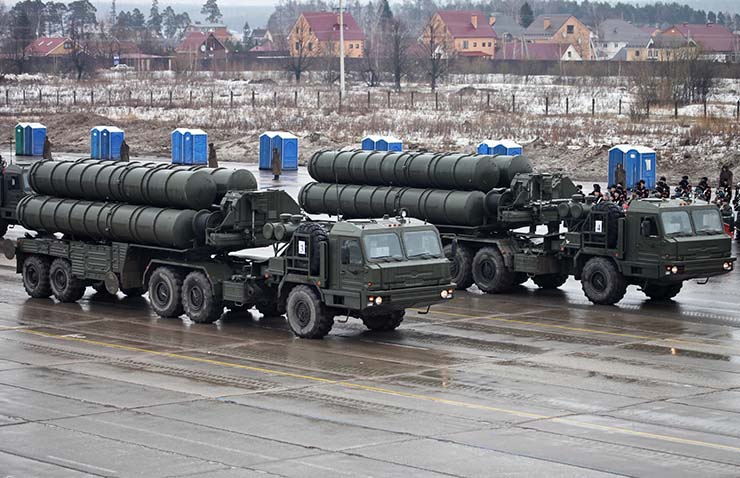
The armed forces around the world are experiencing a technological revolution to equip themselves for future battles. Combat might be made significantly swift, accurate, stealthy, and intelligent with the help of cutting-edge technology like quantum computing, artificial intelligence, and digital surveillance. The use of multiple of these technologies may be necessary to achieve this desired outcome.
The complexity of military operations means that it is easy to fall into the trap of thinking that every technological capability development also brings a comparable improvement in the quality of life. But unfortunately, while technological advancements can have far-reaching positive effects, they can also carry significant dangers, mainly when they occur quickly and in the public eye.
Cyberattacks, ethical dilemmas, and weapons races are only some of the new challenges and hazards made possible by these technologies. The military must adjust to new realities and create novel doctrines, strategies, and standards to effectively and ethically use technology in times of war and peace.
The Challenges of Emerging Technologies
The theatre and field commanders must be cautious to ensure the efficient and effective introduction of new technologies. The salient factors that may need attention:
QCM Issues: Quality control management issues may arise whenever a company adopts a new way of doing things. As a result, employees could be apprehensive about embracing change. Training and streamlined switching-over procedures could do away with such bottlenecks.
Supply Chain Challenges: There have been issues with the supply chain because the COVID-19 pandemic has interrupted supply lines worldwide, leading to a lack of semiconductors (chips) and other essential materials. Many emerging technologies can’t progress without these parts.[1]
Increasing Threat to Information Security: The number of cyberattacks is rising. As more businesses move their activities online, they will accumulate more data that could be stolen or held for ransom. In addition, since quantum computers can decipher encrypted data, modern security measures may need to be updated.
Ethical Issues: Safeguarding human dignity, privacy, responsibility, and fairness in using artificial intelligence and digital surveillance are just two examples of the ethical concerns posed by emerging technology. Fairness in applying cutting-edge technologies is another area where moral questions arise. Inappropriate or harmful uses of these technologies are also possible, including creating automated weaponry and manipulating human judgements.
Investment Challenges: New technologies require significant investments in R&D, infrastructure, skill, and regulation, but all of which provide difficulties for investors. However, there are many unknown factors when investing in deep technological projects, such as high failure rates, complex intellectual property difficulties, and a lack of standardisation.[2]
IT Challenges with Emerging Technology: Organisations face new IT challenges as a result of emerging technologies, such as how to integrate new systems with old ones, how to manage data quality and security, how to automate mundane tasks, how to make use of cloud computing and AI, and how to facilitate a ‘Bring-Your-Own-Device’ (BYOD) culture.[3]
The Modernisation of Indian Armed Forces
India has 93 military modernisation projects in progress, with a total budget of $18.4 billion. Long-range weaponry, multi-use drones, night-fighting capabilities, disruptive technologies, and early warning and detection systems are just a few of the areas being worked on currently. The Indian government is also investing heavily in heavy artillery, rocket battalions, cruise missiles, and loitering munitions.[4]
The first shipment of 70,000 Russian AK 203 assault rifles has arrived in India, while the country aims to purchase 200 new South Korean K-9 Vajra self-propelled howitzers. For its armed forces, India is looking at purchasing cutting-edge infantry combat vehicles and major battle tanks.[5]
Indian Air Force and Indian Navy are Adopting Emerging Technologies
Some of the emerging technologies that the Indian Air Force and Indian Navy are adopting are:
Unmanned Combat Air Vehicle (UCAV): AURA is a stealth-capable autonomous UCAV that the Defence Research and Development Organisation (DRDO) developed for the Indian Air Force (IAF) and the Indian Navy. AURA will serve as the frontline long-range strike platform capable of carrying missiles, precision-guided bombs, and munitions.[7]
Innovation for Defence Excellence (iDEX): iDEX is an initiative by the Department of Defence Production to foster innovation and technology development in defence and aerospace sectors by engaging startups, MSMEs, individual innovators, R&D institutes, and academia. iDEX provides funding support, mentoring, handholding, technical guidance, and prototype development opportunities to innovators.[8]
Amphibious Warfare Capabilities: The Indian Navy has to focus on acquiring amphibious ships for developing an amphibious task force with dedicated amphibious warfare doctrines, a response to the Chinese Anti-Access/Area-Denial (A2/AD) strategy.[9]
Global Command, Control, Communications, Computers, Intelligence, Surveillance, and Reconnaissance (C4ISR) Capability: The Indian Navy needs to develop a global C4ISR capability that will ensure effective maritime strike operations.[10]
Military Modernisation Programme: The Indian government has been ramping up efforts to bolster military capability because of the changing geopolitical situation and security landscape. The Defence Acquisition Council has accorded approval for the procurement of 14 products within 30 months of the contract for prototype development under iDEX.[11]
Countering the Challenges from Emerging Technologies
Our armed forces must be modern and tech-savvy to encounter any security challenges. Some ways to overcome the difficulties of emerging military technologies are listed below.
Investing in Technological Innovation: The Indian military needs to invest in emerging technologies like artificial intelligence, quantum computing, biotechnology, and hypersonic weapons to keep its technological edge over any possible adversaries. In addition to this, it needs to acquire the ability to regularly test and audit newly inducted systems. A procurement system that is more adaptable and versatile is to be implemented.[12]
Be Self-reliant in Defence Sector: An important lesson which Russia-Ukraine conflict is to be self-reliant in defence sector. Dependence on other countries for spares and ammunition during war is tantamount to being hostage to that country. The country has taken initiatives in that direction, hopefully India will be ‘Aatmanirbhar’ in vital areas.[13]
Enhancing Diplomatic Alliances and Partnership Structures: It is vital to maintain required operational preparedness by our armed forces to deter or defeat prospective enemies. At same time, it is also necessary to strengthen our diplomatic and strategic alliances with countries who share its interests and values, as well as to capitalise on the aggregate resources and capabilities of these countries. In addition to this, it must encourage collaboration and trust among friends and partners on problems such as the transfer of technology, exchange of information, interoperability, and the distribution of responsibilities.[14]
Development of New Doctrines and Standards: The nature of war is constantly shifting, and new technologies provide new obstacles. We need to develop new concepts and standards that will direct its use of these technologies in conformity with our strategic requirements. Although Indian diplomatic efforts to defuse the tension at borders have been appreciated across the globe, our diplomatic conversation and confidence-building measures need to continue, with possible enemies to lessen the likelihood of any misunderstanding, escalation, or confrontation occurring. [15]
Conclusion
The Indian military anticipates gaining an advantage in the technological arms race by being the first to adopt disruptive and emergent technologies. Therefore, the ability to conduct military operations effectively on the future’s multi-domain, technology-dominated battlefield will be crucial. The Indian military is well-organised, well-equipped, and well-trained for conventional warfare. However, it wants the technological asymmetry tilted towards them by adopting innovation, technology, and disruptive and emerging technologies. The Government must extend necessary support on a priority basis to ensure the Armed Forces are capable of meeting future challenges.
Reference
[1] https://www.enterprisetechmgmt.com/2021/06/22/ethical-challenges-of-emerging-technologies/.
[2] https://www.bcg.com/publications/2021/overcoming-challenges-investing-in-digital-technology.
[3] https://frontrangesystems.com/blog/top-5-it-challenges-with-emerging-technology.
[4] Ibid.
[5] https://pib.gov.in/PressReleasePage.aspx?PRID=1795536.
[6] https://thekootneeti.in/2020/07/16/modernization-of-indian-armed-forces/.
[7] https://www.dw.com/en/how-india-is-ramping-up-efforts-to-bolster-military-capability/a-60336292.
[8] iDEX. https://idex.gov.in/.
[9] http://www.indiandefencereview.com/spotlights/emerging-technologies-in-contemporary-ocean-warfare/.
[10] Ibid.
[11] https://www.slideshare.net/maheshtalaiva/emerging-technologies-in-indian-army.
[12] https://mitsloan.mit.edu/ideas-made-to-matter/3-challenges-to-digital-innovation-and-how-to-overcome-them.
[13] https://www.ibef.org/blogs/aatmanirbharta-in-defence#:~:text=Self%2Dreliance%20in%20the%20defence% 20industry%20will%20enhance%20India’s%20strategic,on%20import%20of%20various%20products.
[14] https://www.csis.org/topics/technology/military-technology.
[15] https://www.thecipherbrief.com/column_article/emerging-technologies-and-the-future-of-warfare.
-The writer is a Senior Fellow at the Centre for Air Power Studies. Prior to this he was Group Captain in the IAF. He served the IAF for more than three decades in various capacities. He was Director Air Staff Inspections and retired as Director, Joint Control and Analysis Centre. The views expressed are personal and do not necessarily reflect the views of Raksha Anirveda










